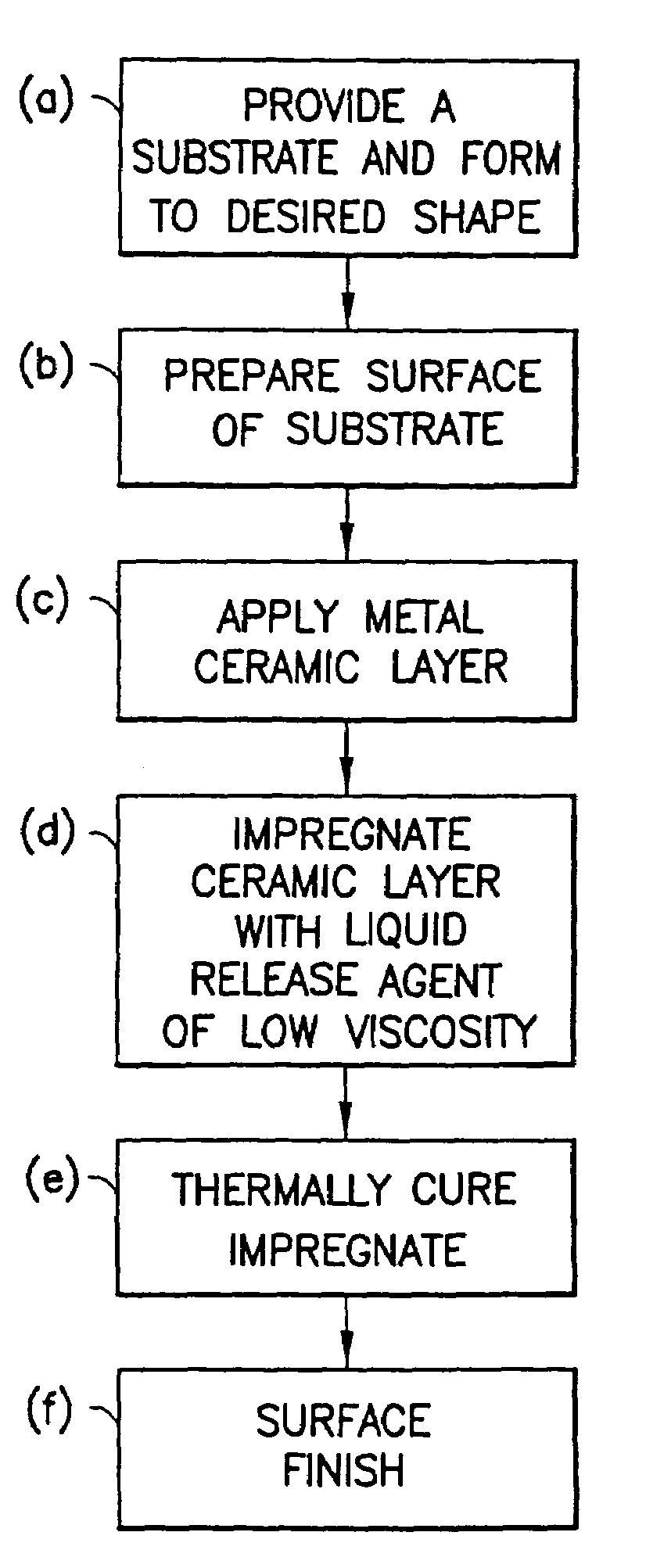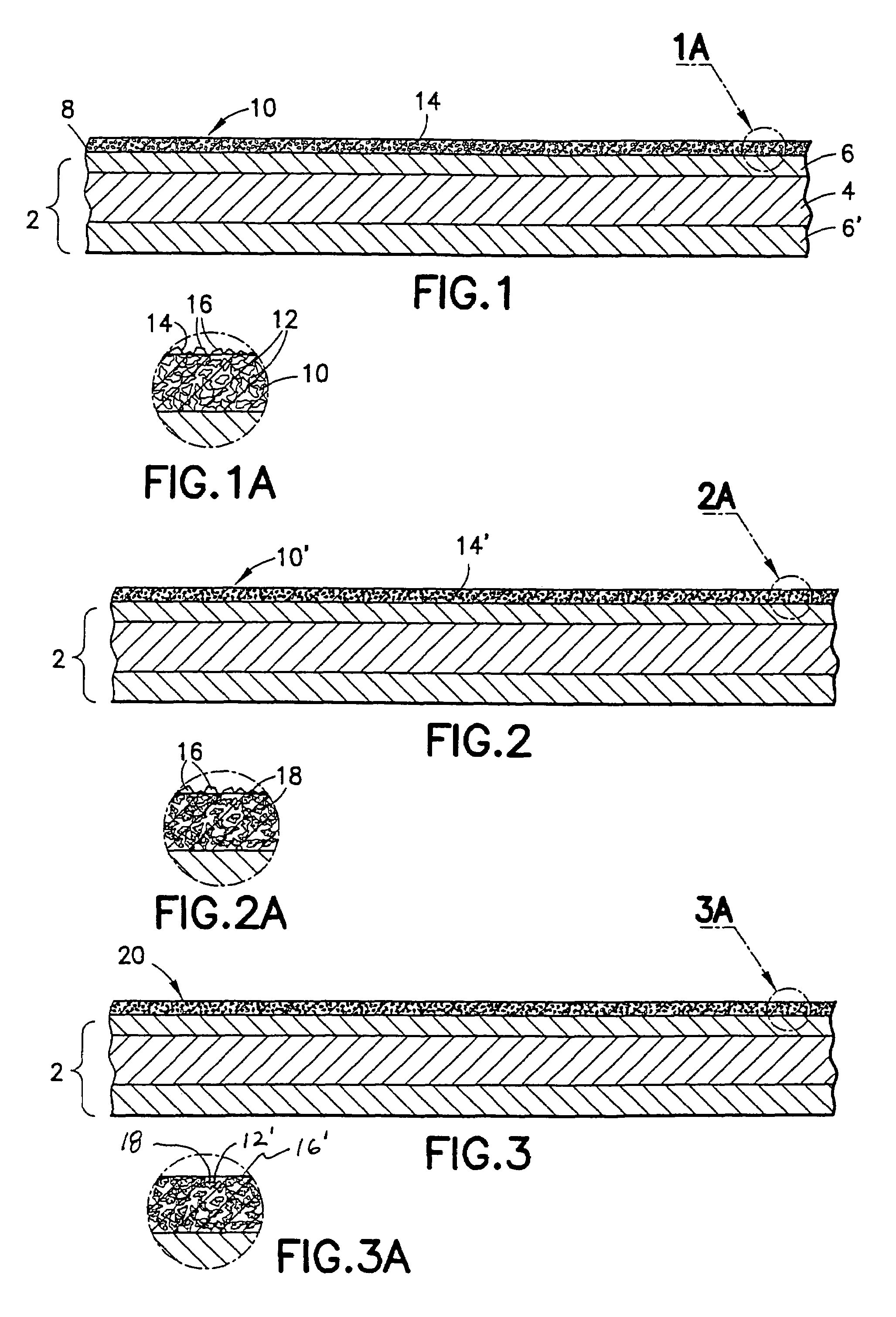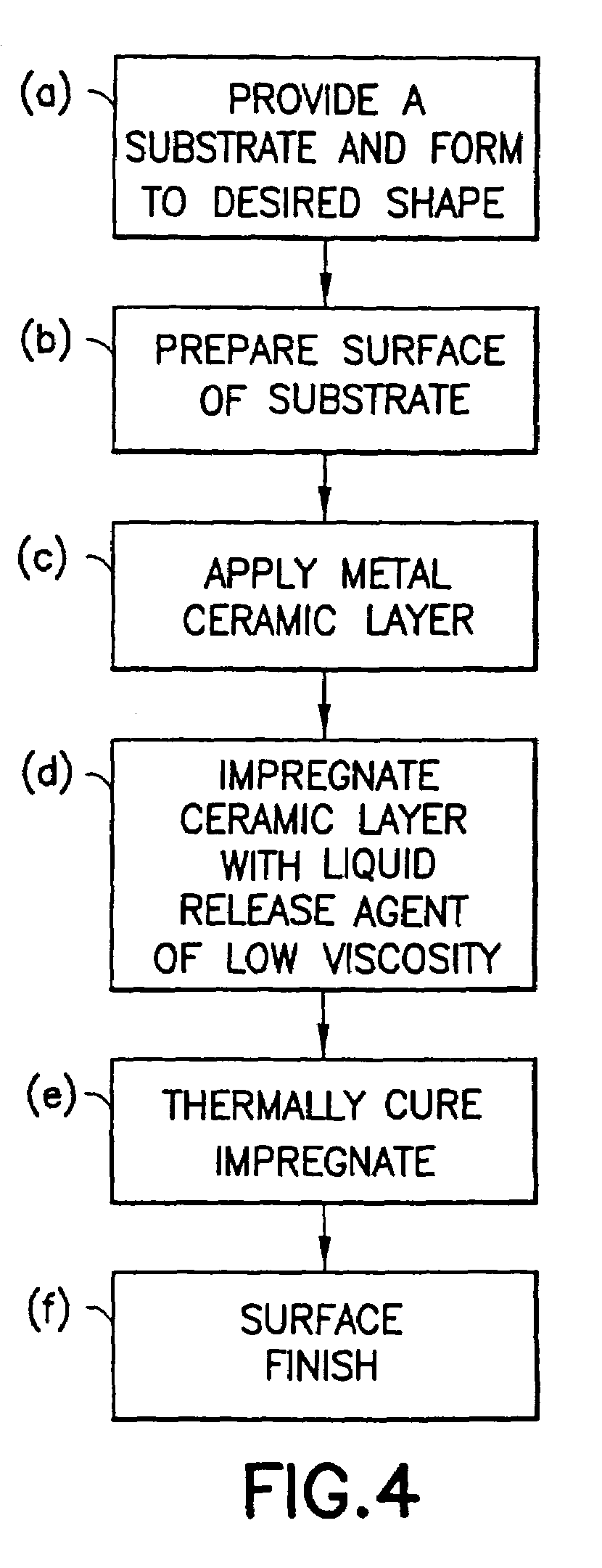Method of making non-stick cookware
a non-stick coating and cookware technology, applied in the field of cooking surfaces, can solve the problems of affecting the cooking effect, so as to prevent potential bacteria growth, prevent bacterial growth, and improve the cooking
- Summary
- Abstract
- Description
- Claims
- Application Information
AI Technical Summary
Benefits of technology
Problems solved by technology
Method used
Image
Examples
examples
[0031]Several fry pans were made using the standard All-Clad® brand 8-inch diameter fry pans having stainless steel, inside and out, with a roll-bonded aluminum core. The stainless steel cooking surface of the fry pans, after cleaning, was plasma coated with a layer of chromium oxide having a porosity of about 7 volume % and a thickness of 0.004 inch. The pores of the chromium oxide layer were then impregnated with GE brand SRM120 silicon resin under vacuum of greater than 28 inches of Hg in the apparatus depicted in FIG. 5. The impregnated silicon resin was then cured in an oven at 550° F. for at least one hour. The fry pans were then polished using a Hi-Lite mechanical finishing machine to smooth off the “peaks” of chromium oxide using an alumina abrasive. The resulting polished surface of the non-stick surface had an average finish smoothness of less than about 7 ra.
[0032]Cooking tests were then run on these fry pans in the dry condition, i.e., using no oil or other lubricant. St...
PUM
| Property | Measurement | Unit |
|---|---|---|
| thickness | aaaaa | aaaaa |
| thickness | aaaaa | aaaaa |
| temperature | aaaaa | aaaaa |
Abstract
Description
Claims
Application Information
 Login to View More
Login to View More - R&D
- Intellectual Property
- Life Sciences
- Materials
- Tech Scout
- Unparalleled Data Quality
- Higher Quality Content
- 60% Fewer Hallucinations
Browse by: Latest US Patents, China's latest patents, Technical Efficacy Thesaurus, Application Domain, Technology Topic, Popular Technical Reports.
© 2025 PatSnap. All rights reserved.Legal|Privacy policy|Modern Slavery Act Transparency Statement|Sitemap|About US| Contact US: help@patsnap.com



